 W
WLouise Allcock is a British researcher, best known for her work on ecology and evolution of the cephalopods of the Southern Ocean and deep sea. She is the editor of the Zoological Journal of the Linnean Society.
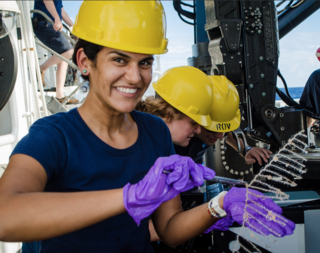 W
WDiva Joan Amon is a marine biologist from Trinidad. She is a Marie Skłodowska-Curie Actions (MSCA) Research Fellow at the Natural History Museum, London.
 W
WMaría de los Ángeles Alvariño González was a Spanish fishery research biologist and oceanographer globally recognized as an authority in plankton biology. She was the first woman ever appointed as scientist aboard any British or Spanish exploration ships. She discovered 22 new species of marine animals and published over a hundred scientific books, chapters and articles. In her late career she studied the history of early marine scientific exploration.
 W
WHelen Irene Battle was a pioneering Canadian ichthyologist and marine biologist. She was the first Canadian woman to earn a PhD in marine biology and she was also one of the first zoologists to engage in laboratory research. She was an emeritus professor of zoology at the University of Western Ontario from 1972.
 W
WIrene Bernasconi was an Argentine marine biologist specializing in Echinoderm research and best known for her work in the Antarctic. She was the first echinoderm specialist in Argentina and spent 55 years conducting research into echinoderms found in the Argentine Sea. Her main focus was sea stars however she also conducted research into brittle stars and sea urchins.
 W
WHope Black was an Australian scientist, a marine biologist and malacologist. In 1937 she started working at the National Museum of Victoria. Subsequently, she became Curator of Molluscs at the museum in 1946. One of the first four women to carry out research in the sub-Antarctic in 1959. She was the National Museum's first female curator. When she married in 1965, she was forced to leave the museum, and instead became a science teacher for thirteen years. In 2019 Lake Macpherson on Macquarie Island was named for her.
 W
WEsther Fussell Byrnes (1867–1946) was an American biologist and science teacher. She was one of the first women copepodologists—scientists who study copepods. She was a fellow of the New York Academy of Sciences, as well as the American Society of Naturalists.
 W
WRachel Louise Carson was an American marine biologist, author, and conservationist whose book Silent Spring and other writings are credited with advancing the global environmental movement.
 W
WAsha de Vos is a Sri Lankan marine biologist, ocean educator and pioneer of blue whale research within the northern Indian Ocean. She is known for her Blue Whale Project. She is a Senior TED Fellow and was chosen for a BBC 100 Women award in 2018.
 W
WKarin Dubsky is a German-Irish marine ecologist working in Trinity College Dublin, notable as an environmental activist, the coordinator and co-founder of Coastwatch Europe, an environmental NGO and a member of the European Environmental Bureau.
 W
WSylvia Alice Earle is an American marine biologist, explorer, author, and lecturer. She has been a National Geographic explorer-in-residence since 1998. Earle was the first female chief scientist of the U.S. National Oceanic and Atmospheric Administration, and was named by Time Magazine as its first Hero for the Planet in 1998. She is also part of the group Ocean Elders, which is dedicated to protecting the ocean and its wildlife.
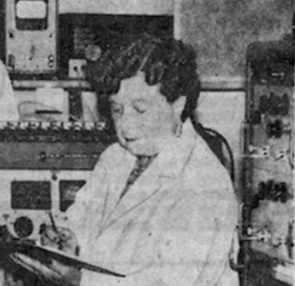 W
WMarie "Bobbie" Dennis Poland Fish was an American oceanographer and marine biologist best-known for her bioacoustics research. Her research on underwater sound detection allowed the United States Navy to distinguish enemy submarines from wildlife. The United States Navy awarded her its highest civilian award, the Distinguished Service Medal, in 1966 to recognize her contributions during her twenty-two years (1948-1970) leading the "Underwater Sound of Biological Origin" project for the Office of Naval Research. She also founded the Narragansett Marine Laboratory with her husband. It is now the University of Rhode Island's Graduate School of Oceanography.
 W
WPamela Hallock Muller is a scientist and Professor at the University of South Florida in the College of Marine Science. Her research has focused on reef-associated Foraminifera and algal symbiosis, extending into coral-reef ecology, paleobiology and carbonate sedimentology. She is a diversity and inclusion advocate that has championed gender equality for many decades.
 W
WAyana Elizabeth Johnson is a marine biologist, policy expert, and conservation strategist. She grew up in Brooklyn, New York and holds a PhD in marine biology from the Scripps Institution of Oceanography. She is the founder and president of Ocean Collectiv, a consulting firm that helps find ocean "conservation solutions grounded in social justice," and the founder of Urban Ocean Lab, a think tank for climate change and ocean conservation policy in coastal cities.
 W
WMyrtle Elizabeth Johnson was an American marine biologist, ascidiologist, and educator in California in the early 20th century. She was the first woman PhD faculty member at the San Diego State College and was chair of the Biology department for two decades. Her major work, Seashore Animals of the Pacific Coast, published in 1927, was the standard descriptive text of intertidal species until Ed Ricketts's Between Pacific Tides was published in 1939. Ricketts considered Johnson's book "the vade mecum of marine biologists of the Pacific. Indispensible."
 W
WHeather Koldewey is a marine biologist and environmentalist, a specialist on seahorses and their relatives. She is currently the Section Head of Global Programmes at the Zoological Society of London. Koldewey is co-founder and Field Conservation Manager of Project Seahorse, a marine conservation organization. Koldewey's research interests focus on marine and freshwater conservation, seahorse biology and genetics, and the impact of the aquarium trade on wild populations of fish and aquatic invertebrates.
 W
WMarie Victoire Lebour was a British marine biologist known for her study of the life cycles of various marine animals. She published more than 175 works during her long career.
 W
WRosa Mabel Lee (1884-1976) was a statistician, the first woman scientist to be employed by the Marine Biological Association and the first woman to work as a government fishery scientist in the United Kingdom.
 W
WKatrin Linse is a German marine biologist, best known for her work on discovering new Antarctic and deep sea species.
 W
WNancy Helen Marcus was an American biologist and oceanographer. During her graduate studies, Marcus became known as an expert on copepod ecology and evolutionary biology. She began her career as a postdoctoral fellow at the Woods Hole Oceanographic Institution where she studied copepod dormancy and its implications for marine aquaculture. She continued her field research as a professor of oceanography and later as the director of the Florida State University Marine Laboratory (FSU). During this time Marcus was elected as a Fellow of the Association for Women in Science and the American Association for the Advancement of Science and served as the President of the Association for the Sciences of Limnology and Oceanography. As the president, she led efforts in increase education activities and to increase the endowment fund.
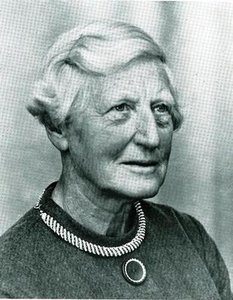 W
WDr Sheina Macalister Marshall was a Scottish marine biologist who dedicated her life to the study of plant and animal plankton. She was an authority on the copepod Calanus. She worked at the Marine Biological Station at Millport, Cumbrae in Scotland from 1922-1964.
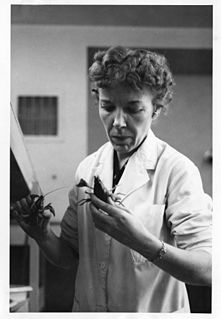 W
WMary Alice McWhinnie was an American biologist, professor at DePaul University and an authority on krill from Chicago, Illinois She was the first woman to sail for two months in Antarctic waters aboard the NSF's research vessel, USNS Eltanin. The National Science Foundation eventually allowed her to winter over at McMurdo Station and in 1974, she became the first American woman to serve as chief scientist at an Antarctic research station.
 W
WJessica Melbourne-Thomas is a marine, Antarctic and climate change scientist with the Commonwealth Scientific and Industrial Research Organisation, Australia. Her research focuses on climate change, its effects on the marine environment, and how to adapt and response to these changes.
 W
WIda May Mellen (1877–1970) was an American ichthyologist and biologist. She worked at the New York Aquarium from 1916 to 1929.
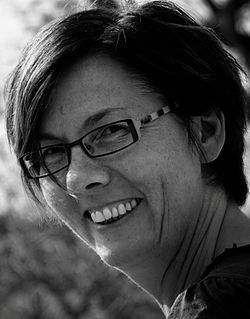 W
WBettina Meyer is a German Antarctic researcher, best known for her work on the ecology and physiology of invertebrates in the pelagic zone. She is the head of the ecophysiology of pelagic key species working group at the Alfred Wegener Institute for Polar and Marine Research (AWI).
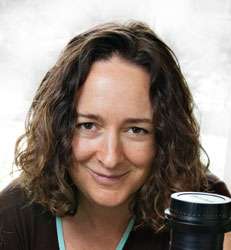 W
WKaren Joyce Osborn is a marine scientist at the Smithsonian's National Museum of Natural History Invertebrate Zoology department. She is known for her work in marine biology specializing in mid-water invertebrates.
 W
WJulie E. Packard is an American ocean conservationist and philanthropist. She helped create the Monterey Bay Aquarium in the early 1980s and is its executive director, a position she has held since its opening in 1984. She speaks at conferences and symposia related to ocean conservation, and writes online about current issues. She is a fellow of the American Academy of Arts and Sciences and is a recipient of the Audubon Medal.
 W
WVivian Helena Pellizari is a Brazilian Antarctic scientist known for her work on establishing Antarctic microbiology in Brazil. Pellizari is the head of Department of Oceanographic Biology at Oceanographic Institute of University of São Paulo.
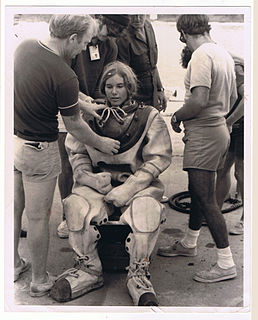 W
WAnne Rudloe was an American marine biologist. She was the co-founder of the Gulf Specimen Marine Laboratory in Panacea, Florida.
 W
WElsie Wilkins Sexton was an English zoologist and biological illustrator.
 W
WAnitra Thorhaug is an American marine biologist, plant ecophysiologist and a chemical oceanographer whose extensive work on the rehabilitation of coastal ecosystems has had a substantial influence on national and international policies on conservation around the world. She is President of the Greater Caribbean Energy and Environment Foundation, and President of the Institute for Seagrasses. She has had a series of professorships at leading Universities and presently works at The Institute of Sustainable Forestry Ecophysiological Laboratories at the Yale School of Forestry & Environmental Studies. She is a member of the International Club of Rome and has twice been President of the US Association of the Club of Rome.
 W
WDorothy Elizabeth Thursby-Pelham (1884–1972) was a scientist at the Zoological Laboratory, University of Cambridge and subsequently at the Ministry of Agriculture, Fisheries and Food - Directorate of Fisheries laboratory in Lowestoft who has been called 'England's first female sea-going fisheries scientist' and was an active member of the International Council for the Exploration of the Sea (ICES).
 W
WAnna Constantia Thynne, Lady John Thynne was a British marine zoologist. In 1846, she built the first stable and sustained marine aquarium and maintained corals and sponges in it for over three years.
 W
WIngrid Natasha Visser is a New Zealand marine biologist who studies orcas. She regularly lectures on the subject aboard cruise ships, especially in Antarctica, and has been featured in several documentaries about orcas.
 W
WAnna Antoinette Weber-van Bosse was a Dutch phycologist, specializing in marine algae.
 W
WNerida Gaye Wilson is an invertebrate marine molecular biologist at the Western Australian Museum who has interests in diversity, systematics, phylogeny, phylogeography and behavior. Wilson has been instrumental in demonstrating the level of marine cryptic species complexes in Antarctic waters, testing the circumpolar distribution paradigm with molecular data, and using interdisciplinary approaches to show how Antarctic diversity may have been generated. Her work with NOAA on Antarctic Marine Living Resources has been used to regulate exploratory benthic fisheries.
 W
WRoger Arliner Young was an American scientist of zoology, biology, and marine biology. She was the first African American woman to receive a doctorate degree in zoology.